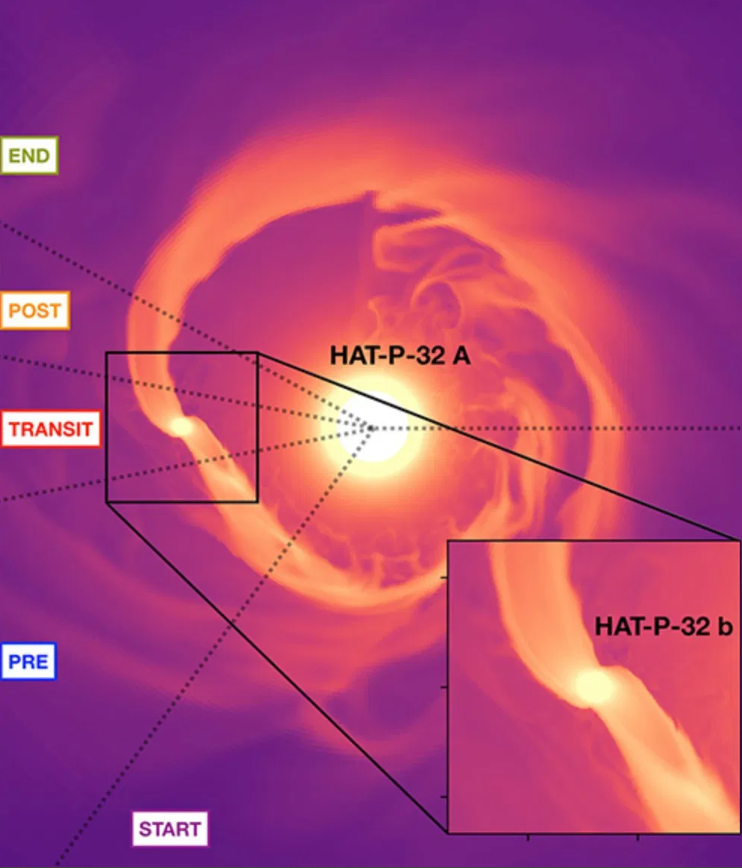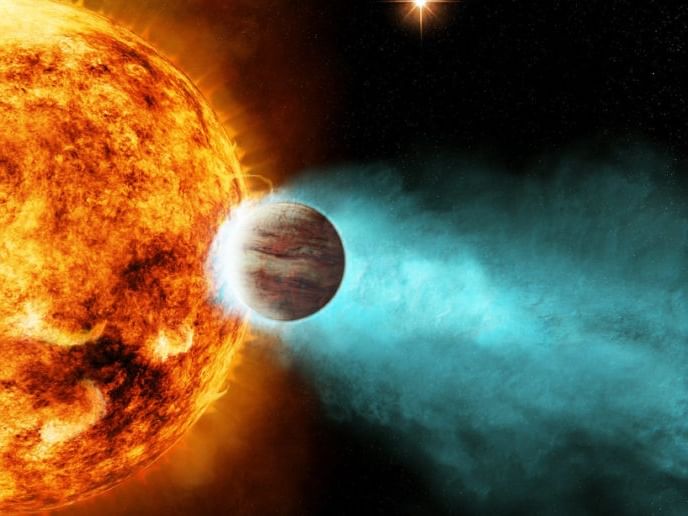Astronomers Detect Helium Tail in Hot Jupiter with Dissipating Atmosphere.
The host star is eroding the atmosphere of a gas giant exoplanet situated in close orbit around it. Astronomers have witnessed the dynamic helium tail of an exoplanet undergoing atmospheric stripping due to the energetic emissions from the host star. HAT-P-32b, categorized as a Hot Jupiter, represents a gas giant exoplanet closely orbiting its host star. The helium tail extends more than 50 times the radius of the Hot Jupiter, marking one of the most extensive tails observed on an exoplanet to date. While many exoplanets exhibit tails resulting from collisions or proximity to the host star, the tail of HAT-P-32b is notably exceptional.
The findings have been detailed in a paper published in Science Advances. Zhoujian Zhang, the first author of the paper, expresses excitement, stating, “It is exciting to see how gigantic the extended tails are compared to the size of the planet and its host star.” The observation of the tail occurred during a transit, a celestial event where the exoplanet passes in front of the host star as viewed from Earth. This observation was conducted using the Hobby-Eberly Telescope at the McDonald Observatory in the University of Texas at Austin.

The astronomers successfully monitored the exoplanet throughout its entire orbit, enabling them to gauge the complete length of the tail. This distinctive observational approach revealed an unusually lengthy tail, suggesting that prior observations might have underestimated the mass of exoplanets featuring tails. Another possible explanation is a notable diversity in the rate at which the planet loses mass.
Described as a puffball Hot Jupiter, HAT-P-32b is a unique type of gas giant whose atmosphere has expanded due to the heat from the host star, akin to a hot air balloon. This research offers insights into how other Hot Jupiters engage with their respective host stars.
Do not forget to share your opinion with us to provide you with the best posts !




0 Comments